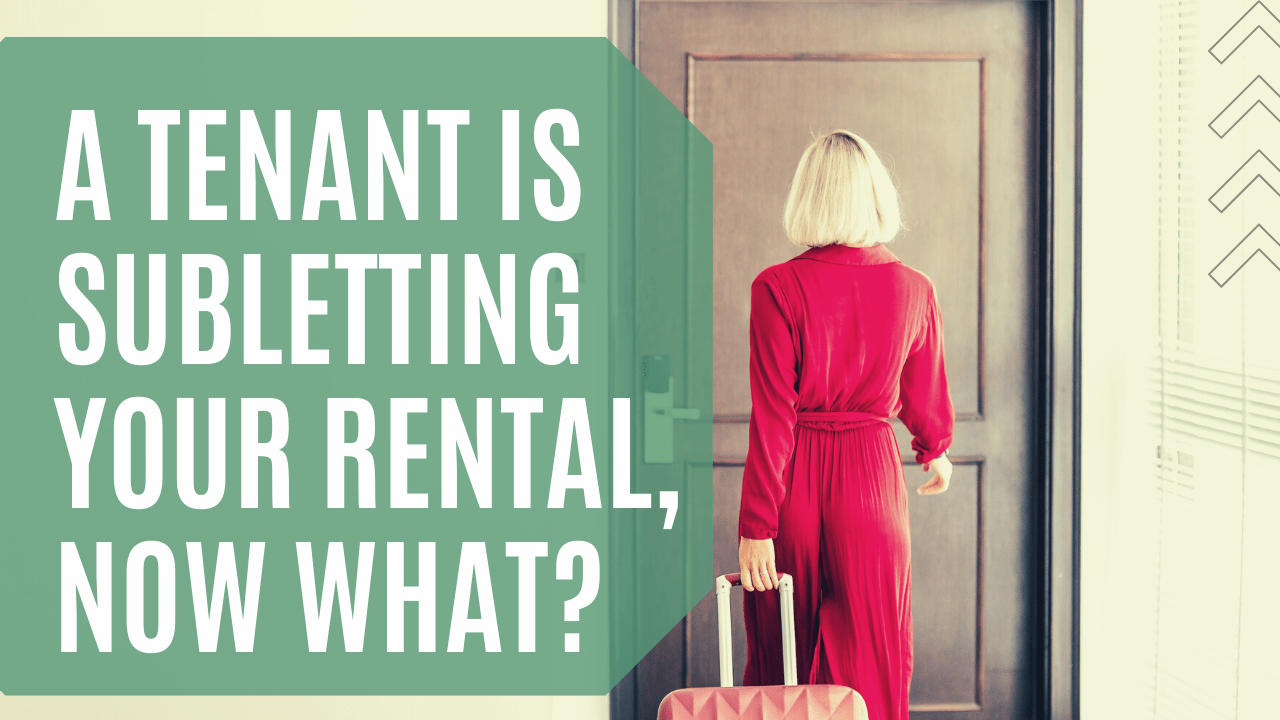A TENANT IS SUBLETTING YOUR RENTAL, NOW WHAT? San Francisco Property Management Advice

Has your tenant moved out of your rental property, but instead of talking to you and helping you find a new tenant, they’ve simply kept their lease and begun subletting to someone else? This is unfortunately becoming more common in San Francisco. Tenants are subletting their homes without owner approval, or they’re renting out their properties nightly to transient visitors who come and go.
There’s a lot of risk involved in subletting your property, especially if tenants are being welcomed in without getting screened.
Sublets also impact your market rent, especially on a rent-controlled property.
WHAT DOES THE RENT ORDINANCE SAY?
San Francisco's Rent Ordinance generally allows tenants to replace departing roommates and or to increase the number of occupants living in the unit, even if your lease says otherwise. That’s frustrating. HOWEVER, The Rent Ordinance does not allow a tenant to sublet or turnover the entire unit to a new tenant in violation of a lease, or to sublet the unit for tourist or transient use.
1. CREATE A STRONG LEASE AGREEMENT THAT ADDRESSES SUBLETTING
If you want to avoid subletting, you need to address it in your lease agreement and reinforce whatever the lease says with your tenants.
When you suspect a tenant is subletting your property, the first thing you want to do is check your lease agreement. Make sure you have a no subletting clause.
Most professionally written and recent lease agreements include a clause that addresses sublets, but take a look at yours and make sure it’s prohibited or that a landlord’s approval is required.
2. DOCUMENT THE SUBLETTING
Assuming that you do, in fact, have a no subletting clause, you’ll have to prove that your tenant is no longer living in the property and subletting it to someone else. This can be tricky, but there are ways to investigate the situation. You will need to gather all of your evidence and create a file that shows the tenant on your lease agreement is using a different address, has a car registered in another state, or cannot be seen entering or leaving your property.
3. USE MARKET RENTS AS LEVERAGE
In a
San Francisco rental unit that’s subject to rent control, it’s easy to expose a tenant who is subletting your property because all you have to do is raise the rent to market rates. If you can prove your tenant has moved out, you get the green light to increase rent for the new tenant. Typically, the increase will motivate your tenant to terminate the lease agreement. They won’t want to continue subletting their unit if they can’t make money doing so.
Invest in good tenant relationships
Tenants are more likely to follow the terms of their lease agreement when they have a good working relationship with their landlord or
property manager. Make sure you’re responsive, communicative, and constantly reaching out to your San Francisco tenants.

SAN FRANCISCO PROPERTY MANAGEMENT LIMITS SUBLET SCANDALS
A lot of tenants know what they can get away with and when your property isn’t professionally managed, they can often get away with a lot. Don’t take that risk. We’ve been doing this for more than 30 years at BanCal Property Management, and we can protect your investment and your tenants. We can make sure a strong lease agreement prevents illegal sublets and holds your tenants accountable.
To hear more about our leasing and management services, please
contact us at BanCal Property Management. We also welcome your comments, questions, and suggestions for topics you want to learn about, so please share those too. Let us know what you’d like to hear about when it comes to effectively managing a rental property in San Francisco.









